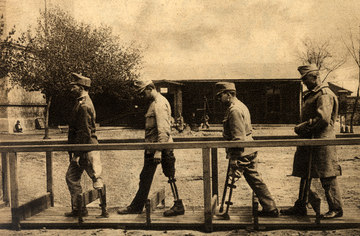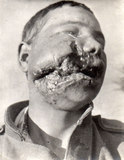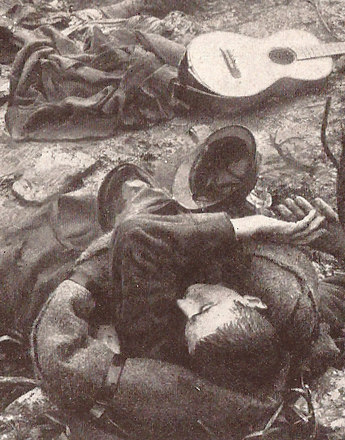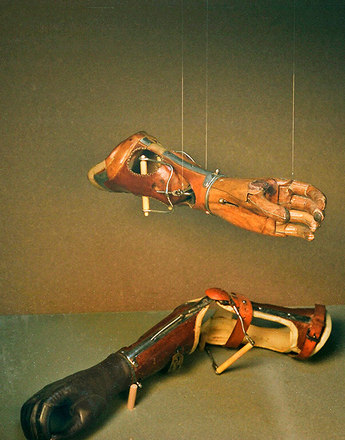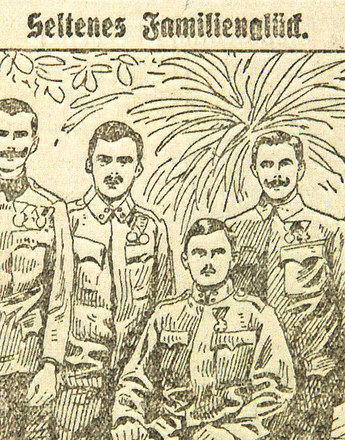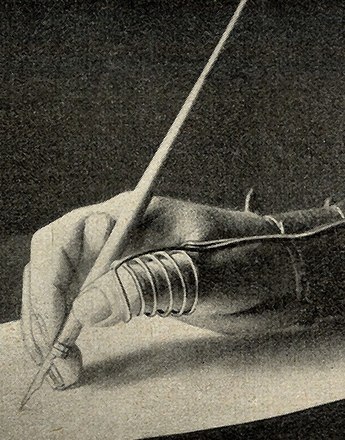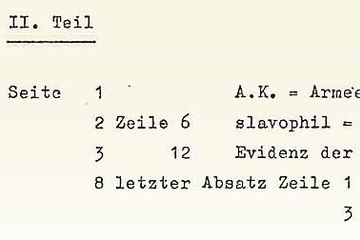Men with amputations and the blinded were in the minority among war invalids. Many suffered under stiff joints, lameness and pain caused by shot wounds. The great majority however contracted tuberculosis.
People generally associate war invalids with soldiers with one arm, or one leg, or who have lost their sight. Amputated and blind soldiers also dominate the pictorial records. But the reality cast in statistics looks different. A post-war statistic for the Vienna region shows that only 6 % of all war invalids suffered amputation and only a minimum of soldiers returned blinded from the war. The number of those blinded in the war throughout the whole of Austria counted after the war to just around 300. In fact, most war invalids suffered under stiff joints, lameness and pain caused by shot wounds, and around 40 % of all war invalids were infected with diverse forms of tuberculosis, rampant at the time.
This discrepancy between awareness and reality demonstrates the general invisibility of many war injuries. And yet these hidden and less spectacular consequences of the war were extremely agonising for the former soldiers. Diseases contracted by the soldiers in the field were by no means valid at the start as explicit war invalidities. Soldiers with TB had not the slightest claim on the injury allowances eligible to the war injured according to the military welfare law. Nor were the many options for re-training open to them. A disease that in addition had not been contracted unambiguously through combat and from which many civilians suffered as well seemed far less heroic than a “genuine” war injury.
An ailment frequently observed for the first time in the First World War and which preoccupied physicians intensively, often entailing horrendous treatment methods from a modern point of view, was war neurosis – combat stress reaction. Mental breakdown transported into physical symptoms left the affected soldiers as helpless, so-called “Kriegszitterer” – literally war-related “shakers” – shell shock. Although physicians often accused these men of simulating their ailment, after the war 5 % of war invalids in Vienna were officially certified as suffering under a “nervous and mental illness” causally related to the war. Laws and expert consultants defined which injuries and illnesses applied as war injuries. The latter group was in a special position of power when defining and assessing the degree of injury.
Translation: Abigail Prohaska
Dietrich-Daum, Elisabeth: Die „Wiener Krankheit“. Eine Sozialgeschichte der Tuberkulose in Österreich (=Sozial- und wirtschaftshistorische Studien 32), München/Wien 2007
Hofer, Hans-Georg: Nervenschwäche und Krieg. Modernitätskritik und Krisenbewältigung in der österreichischen Psychiatrie (1880–1920), Wien/Köln/Weimar 2004
Malleier, Elisabeth: Formen männlicher Hysterie. Die Kriegsneurosen im 1. Weltkrieg, Innsbruck 1996
-
Chapters
- Invalid pensions, allowances for wounded veterans, state support and maintenance contributions
- The failure of private welfare
- The hospitals
- From recovery to reintegration: the training of invalids
- Work for war invalids
- Heroes or victims? War invalids and their impact on general awareness
- Forms of war injury
- Discontent and misery: war invalids get organised

